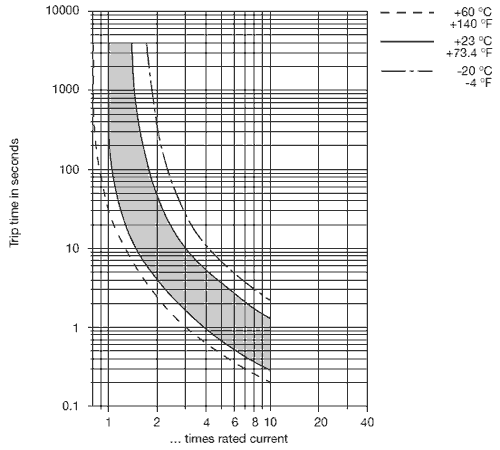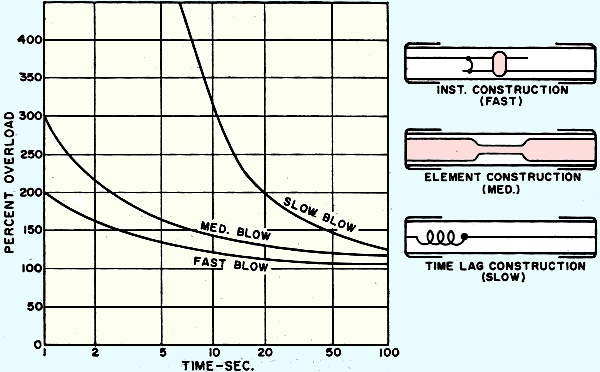I have an 11 year old TIU from when they weren't equipped with internal fuses. My concern is does my TIU need fuse protection and if it does then what type fuse should I add to my TIU and where?
Should I add glass tube type fuses or fast responding blade type automotive fuses? Also, what amp fuses would I use and which TIU input(s) or output(s) should they be added to?
Replies sorted oldest to newest
yes I would use the automotive blade type 10amp before the tiu
My concern is does my TIU need fuse protection and if it does then what type fuse should I add to my TIU and where?
Absolutely!
Place a fast-blow, 10 amp fuse in the Hot wire between each transformer output and its corresponding TIU channel's Hot input terminal.
 | This and a whole lot more is all in “The DCS Companion 3rd Edition!" This book is available from many fine OGR advertisers and forum sponsors, or as an eBook or a printed book at OGR’s web store! |
My LHS tech told me to do this years ago and I have to say it's worked wonders...I have blown several fuses in the past with no damage to the TIU....add in Barry's response above and you can't go wrong...
Joeceleb posted:My LHS tech told me to do this years ago and I have to say it's worked wonders...I have blown several fuses in the past with no damage to the TIU....add in Barry's response above and you can't go wrong...
What type of event caused the fuses between the TIU and the transformer to "blow?" I guess I just don't know how electricity, shorts, etc. behave.
Thanks for any kind response.
for some reason, the MTH power I have won't trip on some small derails or intermittent shorts. The Lionel 180 bricks trip their breaker under the same conditions. I also use large DC Bridgewerks packs and they don't always trip as fast either.
So the auto blade type fuses will trip. I feel that they are protecting things like wires between the trucks. I used to get frustrated when they tripped. Then I saw some others post the results of melting cars from derailments. The wires connecting the trucks got so hot they melted the cars.
SD60M posted:What type of event caused the fuses between the TIU and the transformer to "blow?" I guess I just don't know how electricity, shorts, etc. behave.
Thanks for any kind response.
The power has to make a complete circuit, so a fuse anywhere in the path sees the same current. A 10A fuse on the inputs of the TIU or the outputs of the TIU will see the same current, and also react to any short circuit on the tracks in the same way. The fuse on the input also protects the TIU circuitry, important if the TVS happens to fail shorted, for instance.
Trouble with fuses is that, over not-to-long a run, they cost more than a breaker. I use marine style breakers from Defender and other boat stores, at less than $7 each
Hello RJR Do the breakers you use reset themselves or do you have to reset them manually? We've gone through 100s of fuses but haven't blow a tiu yet. What amperage do you use? I don't suppose they have indicator lights? Thx. Got a link?
Gregg, the Blue Sea breakers that I use reset by pushing a button, which pops out when they blow (no lights, but popped out white button is very visible. I do not use smoke, so I use 5 amp on lightly used lines and 7.5 amp on heavier used lines. The latter is adequate for most combinations of trains I run, and by keeping them of low capacity they blow very quickly.
I would not use automatically resetting breakers, since there could be sparking while I'm correcting the fault.
They run about $5.29 each:
Thank you Robert.... Do you think a 10 amp version would protect the tiu (we use smoke ) or the 7.5 version. I'm leaning towards the 7.5 version...
All I have to do now is talk Jack into the breakers. The fuses have worked well but they're getting to be pain in the butt.
Good stuff.
The 10-amp should be adequate protection. Rule of thumb I use is to use the smallest that consistently doesn't pop. If you run multiple trains, with smoke on, I'd go for the 10. It is surprising how long a thermal breaker or a fuse (even the so-called fast-blow) will allow overcurrent to pass.
I occasionally have a short/derailment which takes awhile to find, or even worse an intermittent short as in a lighted car. and that can go through fuses awfully fast.
Awesome info on the circuit breakers- thanks!!
Jeff78rr posted:Awesome info on the circuit breakers- thanks!!
Yep good stuff thx.
Using common thermal circuit breakers, I'd be a lot more inclined to go with a smaller size. As stated, size them to the load. Buy a few in the 6A range and see if they are prone to nuisance trips. I've posted the breaker curves a number of times, but a 6A thermal breaker will typically tolerate a 30% overload for minutes. Note the band of uncertainty at up to 1.5 times the rated current, it can go for minutes before tripping! It's important to look closely at the specifications of the breaker you're going to use and determine what you can live with.

Attachments
Note that the allowable overload period for "fast-blow" fuses doesn't differ too much from that for breakers. Remember, a fuse is also a thermal device. The filament, which has to carry current, also has to heat beyond the melting point.
The subject says "older TIU." I'd do this for all TIUs, regardless of vintage. It's easier & quicker to press a button than open a TIU, and less wear&tear on the TIU case
RJR posted:Note that the allowable overload period for "fast-blow" fuses doesn't differ too much from that for breakers. Remember, a fuse is also a thermal device. The filament, which has to carry current, also has to heat beyond the melting point.
The subject says "older TIU." I'd do this for all TIUs, regardless of vintage. It's easier & quicker to press a button than open a TIU, and less wear&tear on the TIU case
where is the chart for fuses?
Joe, try the Bussman Fuse website. I believe that's where I saw it.
http://www.cooperindustries.co...-ele-ds-2009-atc.pdf
I never realized how much over they go. Seems like the ATC 10 amp blade type trips fast enough. After seeing the chart, I guess it depends on how the current is applied.
Depends on who's chart you look at.

Gentlemen,
I used the 10 Amp Breakers for years before I up graded my TIU to the fuse type, and I still use the 10 Amp Breakers between every Transformer and my TIU's, especially with any of the old ZW & KW Transformers, works absolutely perfectly, if a breaker pops, just lower than handles on the Transformers, Clear the short on the tracks, Push the Breaker Button back down, and raise your Transformer handles once again, and you are back in operation. I even have these breakers between my newer Z4K transformers and the TIU, in this way I never have a problem with my TIU.
PCRR/Dave





